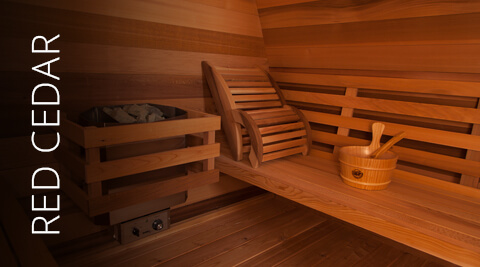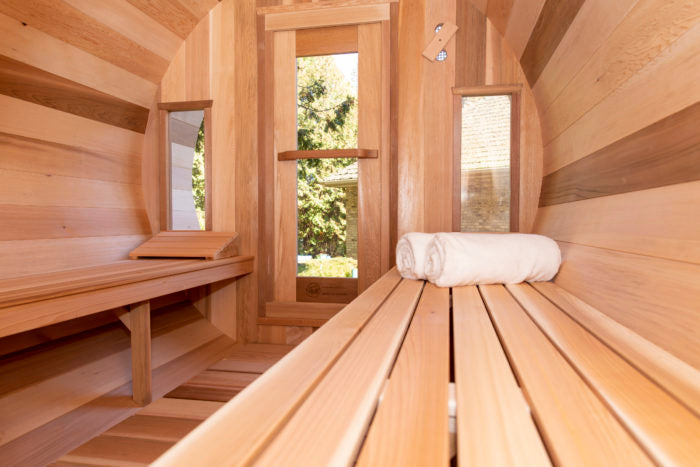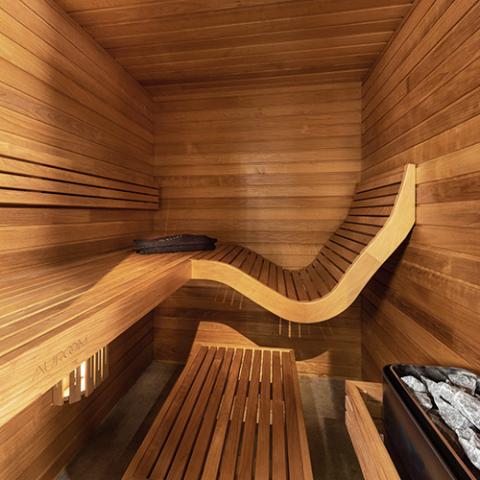Traditional Sauna - Questions
Traditional Sauna - Questions
Blog Article
The Definitive Guide for Traditional Sauna
Table of ContentsLittle Known Questions About Traditional Sauna.Some Ideas on Traditional Sauna You Should KnowThe smart Trick of Traditional Sauna That Nobody is DiscussingNot known Incorrect Statements About Traditional Sauna Everything about Traditional Sauna
A lot of the weight shed in a sauna is water loss and is re-gained upon rehydrating. Nonetheless, without a question sauna can be an integral part of a healthy and balanced weight-loss program. To check out the differences in between conventional and IR saunas, I will certainly separate these right into verifiable, academic, and made differences.Thus, the hottest factor in the saunawhich goes to the ceiling straight over the sauna heateris commonly between 185 and 190 F. Claims that a conventional sauna exceeds 200 F is just not true and not applicable for electric saunas marketed in the US. The temperature level for a far-infrared sauna is normally set between 120 and 140 F; however, unlike the typical sauna, the objective in and IR room is not to achieve a heat.
Because of this, the temperature level distinction is practically unnecessary, given that extreme sweating results in both sauna types, but the approach of heating up the body is various. In an IR sauna the bather will certainly feel hot and will certainly sweat profusely, but at much lower temperatures (Traditional Sauna). Hence, if the goal is to spend longer amount of times in the sauna, the IR sauna is a great selection
When a typical sauna has been correctly heated up, the sauna walls are cozy, the air temperature level has attained set temperature level and the rocks are super warmed. As an interesting side note, the heated walls and the rocks are emitting far-infrared heat, incorporated with the heated air, to produce an "enveloping warm".
The Of Traditional Sauna

When the heat is accomplished, the elements cycle on and off to keep the heat. Most conventional sauna individuals take pleasure in pouring water over the rocks to produce vapor to elevate sauna humidity levels. The advantages of putting water over the rocks include: making the area more comfy, dampening the nasal flows, and permitting the usage of aromatherapy by mixing crucial oils with the water.

When the power enters the body, it triggers the body temperature level to raise and inevitably causes perspiration. In an infrared sauna it's crucial for the emitters/heaters to remain on practically regularly. Considering that there is no mass of rocks to keep warm, the sauna will cool down if the emitters closed off.
As stated above, the sauna bather in an infrared space wishes to place himself before operating emitters to obtain maximum gain from the heat. The home heating time for both spaces can be extremely various, relying on just how the spaces are utilized. For a typical sauna, a bather ought to enable 30-40 minutes for the space to accomplish a wanted temperature level and to properly pre-heat the rocks.
10 Simple Techniques For Traditional Sauna
A well built sauna will normally achieve a temperature of 150-160 F in concerning 30-40 minutes. For hotter temperatures, link the space might need to warm for a longer period.

Typical saunas often tend to be larger (thus use even more electricity) than infrared saunas, although conventional saunas are absolutely offered in one and two individual dimensions too. For a two-person conventional sauna, 5x6 or 5x7 size is most preferred. The leading bench can pleasantly seat two or 3 people and is additionally long sufficient to rest throughout the sauna session.
Getting The Traditional Sauna To Work
The ordinary cost per kWH of electrical power in the united state is around $0.11, so a 4.5 kW heating system will set you back around $.50 to compete one hour, if the heating system runs continuously for one hour. Normally a sauna heater will certainly run for 75% of the initial hour and 50% of subsequent hours on considering that the aspects cycle once the established temperature is achieved.

There is a rarely reviewed difference in the social experience in between the two rooms. While our society has shed several go to my blog of the social benefit of the conventional sauna experience, it can be really socially gratifying (Traditional Sauna). From family members time in the sauna, to heart-felt conversations with better halves, to sauna partiesthe standard sauna experience can bring about intimate interacting socially
Traditional Sauna Fundamentals Explained
Most higher end infrared spaces include tinted light treatment, sound systems and full-glass fronts. The size of many spaces enable 2 individuals to pleasantly utilize the area, while some styles may permit a 3rd or 4th individual to utilize the area. Customized infrared areas are additionally offered, with room sizes available approximately 7' x 8' x 7' high.
Report this page